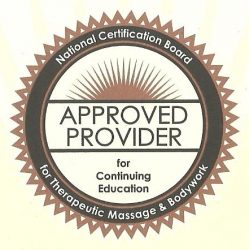Every day, I get emails and calls from therapists who want some advice on problems in their practice. I usually can’t give an answer off the top of my head without questioning the therapist for further details, and visiting their website if they have one (and by the way, not having one is a problem in itself.) Even though two therapists may be having the same problem, there are a lot of factors that are different from one practice to another, that potentially have a bearing on my answer.
The most common things people contact me about are clients who don’t rebook, and not having enough business in general. They will give me a list, of “I’m doing this, this, this, and this, and I’m still not making it.”
Let’s look at the first problem: Clients aren’t rebooking. There are a lot of reasons why clients don’t rebook. The biggest one is probably that the therapist doesn’t ask! Besides “Thank you,” the most important phrase for your business is “When would you like to schedule another appointment?” When I was a brand-new therapist, I was worried about appearing too pushy if I asked a client to rebook. Get over that immediately, and ask every one at every appointment.
If you are asking every client to rebook, and either they aren’t doing it at all, or it’s a very low percentage, I’d look closer into that problem by taking a searching and fearless inventory. Perhaps your technique–or your level of expertise–is just not what they were looking for. Not every person who gets a license to do massage is a great massage therapist. In my traveling around and getting massage in different places, I’ve had massage that’s mediocre, and unfortunately had some that was downright bad….then again, massage is a subjective experience. The massage that I thought was unskilled and sloppy might suit another person just fine. So how do you know?
There are some indicators. If the majority of people come out from the massage praising you to the high heavens, that’s an indicator. And if they don’t, that’s an indicator. If many of the people you’ve seen have referred someone else to you, that’s an indicator. And if they haven’t, that’s also an indicator. Judging by comments I hear from successful therapists, most have a rebooking rate of anywhere from 50-100% (yes, some folks do have a practice that has evolved only to regular clients and standing appointments.) If your own rate is extremely low–say 20% or even less, that could be an indicator–maybe not of your skill in performing massage, but of something else.
The biggest complaint I hear from consumers is about therapists who talk all the time. Many people just want to get on the table and relax, not have a conversation with the therapist or just listen to the therapist rattle on. I’ve also heard complaints about people who had offices that were less than clean and cluttered with junk. And therapists who impose energy work or other non-massage practices on people who don’t want it…I had a client tell me that a therapist she saw walked around the table chanting before commencing the massage. And I hear about therapists who are dressed so sloppily they could be mistaken for a homeless person. If any of that applies to you, you might want to take some corrective measures.
One mistake I often see with practitioners in general is so simple it jumps out at me–but it isn’t occurring to them, and that’s the name of their business. What does the name of your business convey about what you do? Does it convey what you do at all, or is it something that the public would see and say “Mmm, wonder what kind of business that is?” I don’t want to pick on anyone here or insult any of the hundreds of MTs who are in my social networks by inadvertently choosing their name as an example, so I’ll just say I’ve seen some business names that had absolutely nothing to do with massage; the potential client who hears the name isn’t going to automatically associate it with massage, unless that is spelled out as part of the name.
I’m not picking on therapists who incorporate energy work–when that is what the client wants–but I will say this: are you trying to be known as a massage therapist or not? The other day I looked over the website of a struggling therapist, and the first thing I noticed was that Reiki was in the top spot on the menu of services. Massage was listed below the energy modalities on the list. If you’re trying to build your reputation as an energy practitioner instead of a massage therapist, that’s going to work for you. If you’re not, it isn’t. There are a certain amount of people who will immediately decide you aren’t the therapist for them and not read any further. This is also a problem with practitioners who do a modality that the general public isn’t really educated about. For example, if your business identity is Mary Jones, Craniosacral Practitioner, you are apt to attract the limited clientele that already knows what craniosacral is. If that’s what’s on your signage and your advertisement, you are not getting a message to people who are seeking a massage therapist. That’s fine–if craniosacral is all you want to do and you don’t care about attracting new clients.
I’ve heard a few other complaints from the public…like therapists who smell like smoke. Therapists who smell like garlic. Therapists wearing perfume. Sheets and face cradle covers that smell of old oil. Cats and dogs in the office. Therapists who ask nosy personal questions that don’t have anything to do with the massage. Therapists who try to pressure sell retail items or sign up clients for MLM companies. Therapists who go outside their scope of practice and give diet and nutritional advice, or psychological advice, when they have no qualifications to do so. The list goes on.
If you take your searching and fearless inventory, and you aren’t guilty of any of these offenses, then consider a few other possibilities. Did you do a market survey before opening your business? Did you ascertain how much competition is in the immediate area? Did you choose to open your business in an environment that’s already saturated? Are you charging a lot more–or a lot less– than your nearest competitors? Is there a parking problem? Are you in an upstairs office with no elevator? Is your entire office handicapped accessible? Do you keep regular hours, and are they plainly posted?
Simple mistakes are sometimes at fault. Like using your cell phone for business and answering with a “Hey, what’s up. Leave a number and I’ll call you back.” That should be “You’ve reached Laura Allen, massage therapist. Please leave your name and number and I’ll call you back within an hour,” or whatever is the shortest time frame you can offer.
The biggest mistake therapists make is sitting around the office waiting for business to come to them. You have to go out and get it. A lot of free business and marketing advice from myself and other experts in the field is available on www.massagelearningnetwork.com. If you’re struggling, don’t give up on yourself just yet. There’s a solution to every problem–and identifying that there’s a problem is the first step in solving it.

